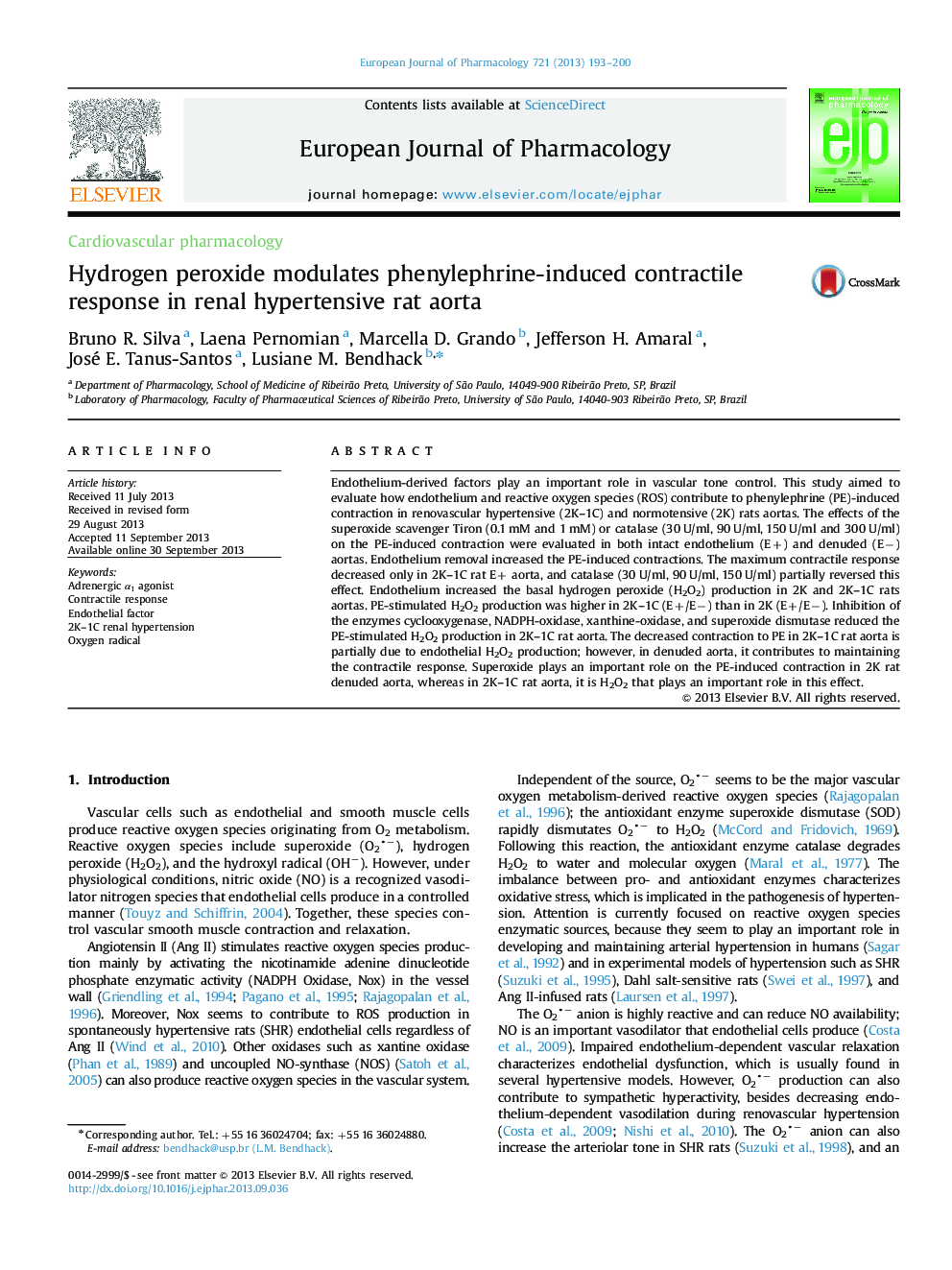| Article ID | Journal | Published Year | Pages | File Type |
|---|---|---|---|---|
| 5828177 | European Journal of Pharmacology | 2013 | 8 Pages |
Abstract
Endothelium-derived factors play an important role in vascular tone control. This study aimed to evaluate how endothelium and reactive oxygen species (ROS) contribute to phenylephrine (PE)-induced contraction in renovascular hypertensive (2K-1C) and normotensive (2K) rats aortas. The effects of the superoxide scavenger Tiron (0.1Â mM and 1Â mM) or catalase (30Â U/ml, 90Â U/ml, 150Â U/ml and 300Â U/ml) on the PE-induced contraction were evaluated in both intact endothelium (E+) and denuded (Eâ) aortas. Endothelium removal increased the PE-induced contractions. The maximum contractile response decreased only in 2K-1C rat E+ aorta, and catalase (30Â U/ml, 90Â U/ml, 150Â U/ml) partially reversed this effect. Endothelium increased the basal hydrogen peroxide (H2O2) production in 2K and 2K-1C rats aortas. PE-stimulated H2O2 production was higher in 2K-1C (E+/Eâ) than in 2K (E+/Eâ). Inhibition of the enzymes cyclooxygenase, NADPH-oxidase, xanthine-oxidase, and superoxide dismutase reduced the PE-stimulated H2O2 production in 2K-1C rat aorta. The decreased contraction to PE in 2K-1C rat aorta is partially due to endothelial H2O2 production; however, in denuded aorta, it contributes to maintaining the contractile response. Superoxide plays an important role on the PE-induced contraction in 2K rat denuded aorta, whereas in 2K-1C rat aorta, it is H2O2 that plays an important role in this effect.
Keywords
Related Topics
Life Sciences
Neuroscience
Cellular and Molecular Neuroscience
Authors
Bruno R. Silva, Laena Pernomian, Marcella D. Grando, Jefferson H. Amaral, José E. Tanus-Santos, Lusiane M. Bendhack,
